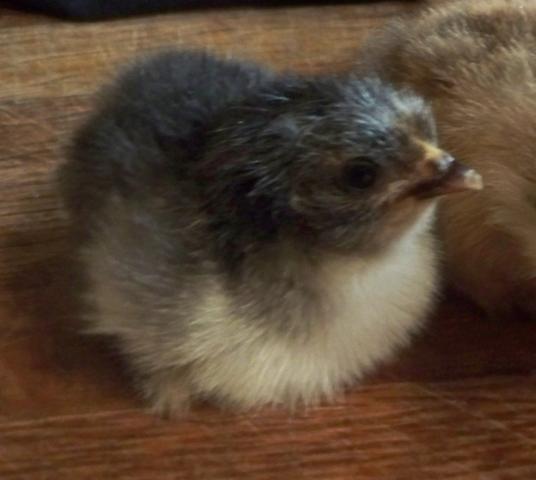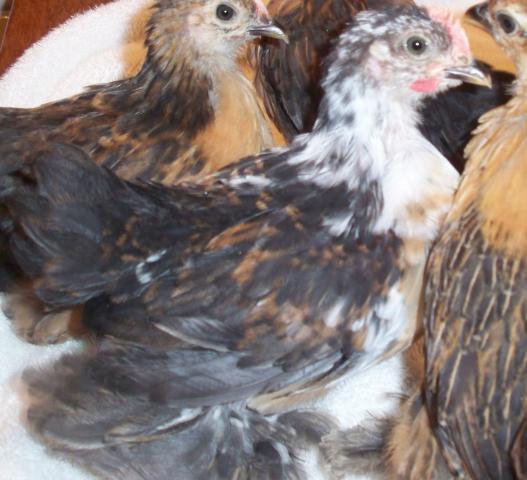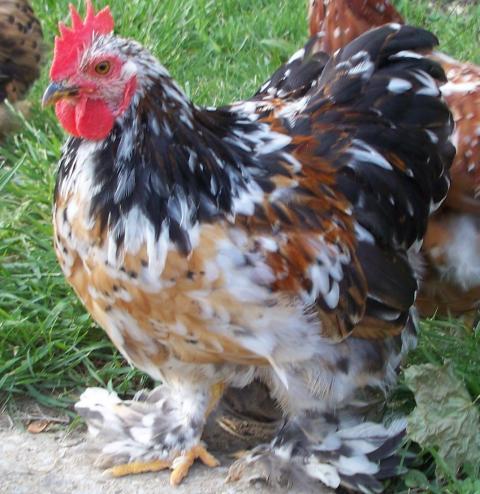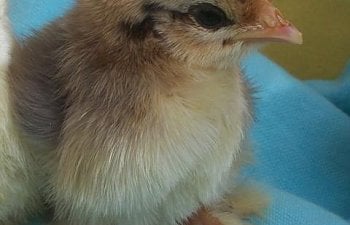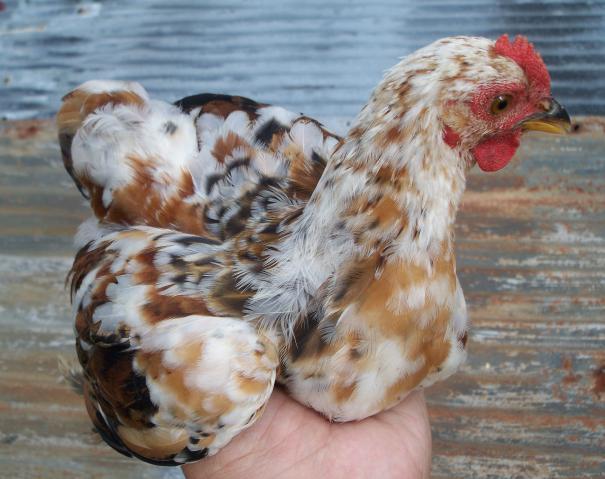Quite a few BYC members as well as other cochin breeders around the US are making great progress with the development of a new variety of bantam cochin... well, new to the United States. Poultry fanciers of the UK have been enjoying the mille fleur bantam cochin for some time now and, with the help of some imported birds as well as crossing different varieties here in the US, we too will have the pleasure of thier beauty.
 Hillary-
Hillary-

[FONT=georgia,palatino] Here is the first generation. These are the three girls (from the crossing of Cass and the two buff columbian hens). As you can see there is much diversity in these birds but there also much promise.[/FONT]



Lynne then took the 8 best pullets (created from crossing Cassanova back to his 3 daughters) & is breeding them to Hillary. This is the second generation.


Here is generation 3. It is remarkable how different these little chickies are. Some hatch blonde, some blonde with patches of red and buff and still others hatch with the "chipmunk" pattern similar to an EE or Welsummer. To further understand what these down colors will produce in a fully feathered out, adult bird, there will be a "Down Color Analogy" at the bottom of this page.
 Below are some of Lynne's breeders for Spring 2010.
Below are some of Lynne's breeders for Spring 2010.





You can see there is something wonderful happening by the comformity in her pullets. Great job, Lynne! Here are a few cockerels Lynne is keeping from this years hatch. The tri-color breast mottling is a must for proper mille coloring.

Here are some chick pics from Lynne documenting how similar her mfc down is to that of mille fleur d'uccle. Mfc is on the right in the 1st pic and on the left in the 2nd pic a bit older.







 This page is an attempt to show what progress we are making as a whole. There is no individual here to take supreme credit. Furthermore, I am sure there are other breeders further along but this is what our BYC mille fleur enthusiasts have to show.
This page is an attempt to show what progress we are making as a whole. There is no individual here to take supreme credit. Furthermore, I am sure there are other breeders further along but this is what our BYC mille fleur enthusiasts have to show.
Individual Projects
Lynne's (wwmicasa1) Project- She started with a "mille fleur" roo shipped from TN to CA. She crossed that roo with some quality buff columbian hens and wound up with 10 cockerels & 3 pullets. She bred back the 3 pullets to her original roo, Casanova. When she initially purchased Cass, she also got 6 hatching eggs. Only one hatched & that is her roo, Hillary. 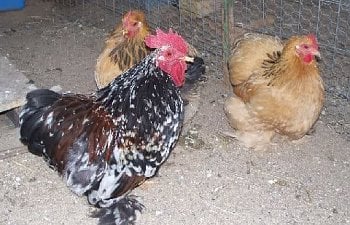 Hillary-
Hillary-
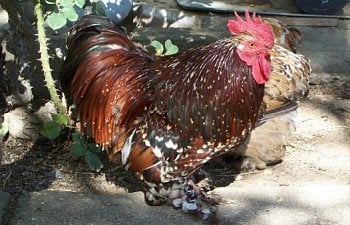
[FONT=georgia,palatino] Here is the first generation. These are the three girls (from the crossing of Cass and the two buff columbian hens). As you can see there is much diversity in these birds but there also much promise.[/FONT]
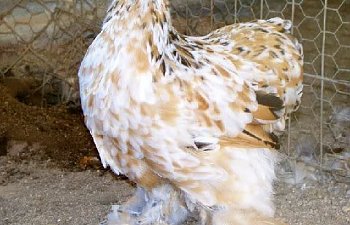
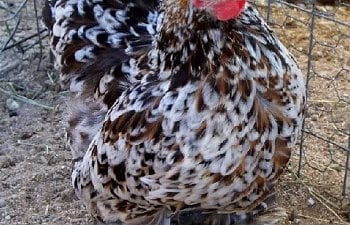
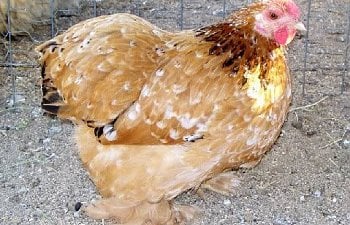
Lynne then took the 8 best pullets (created from crossing Cassanova back to his 3 daughters) & is breeding them to Hillary. This is the second generation.
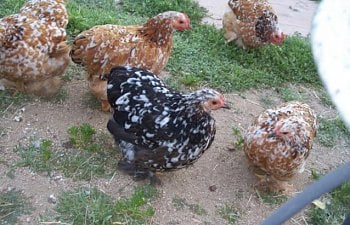
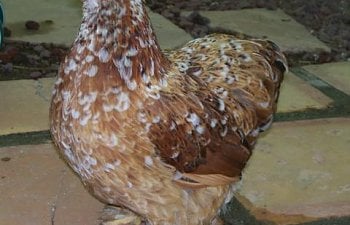
Here is generation 3. It is remarkable how different these little chickies are. Some hatch blonde, some blonde with patches of red and buff and still others hatch with the "chipmunk" pattern similar to an EE or Welsummer. To further understand what these down colors will produce in a fully feathered out, adult bird, there will be a "Down Color Analogy" at the bottom of this page.
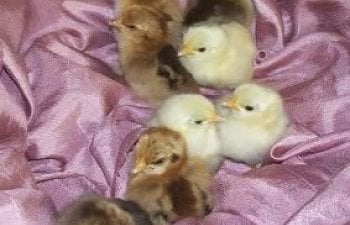 Below are some of Lynne's breeders for Spring 2010.
Below are some of Lynne's breeders for Spring 2010.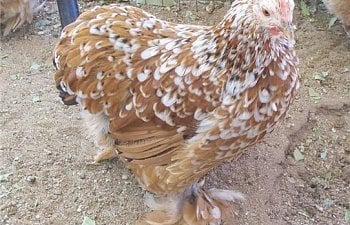
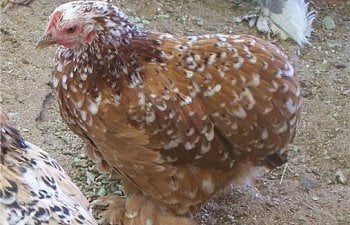
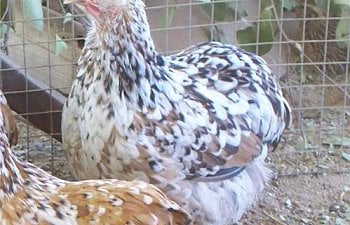
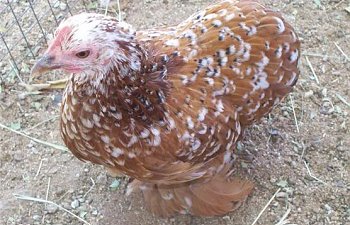
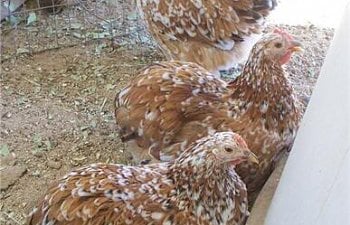
You can see there is something wonderful happening by the comformity in her pullets. Great job, Lynne! Here are a few cockerels Lynne is keeping from this years hatch. The tri-color breast mottling is a must for proper mille coloring.
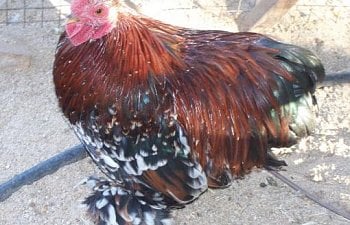
Here are some chick pics from Lynne documenting how similar her mfc down is to that of mille fleur d'uccle. Mfc is on the right in the 1st pic and on the left in the 2nd pic a bit older.
Amazon Doc's Project - The parent birds came indirectly from Mike Vogan. Color is pretty good, although she'd like a more even distribution of black. Type needs improvement. Color is being reproduced fairly consistently, except that roughly half of the cockerels are showing excessive charcoal/black coloration.
The Original Trio


And here are the same birds as juveniles.
2nd Generation: Doc had three chicks from her first hatch. All were wheaten downed with various shades of color on the wings and all were cockerels.


As they matured, she was unhappy with how the darker color on the wings of two chicks resulted in very dark colored birds. The 3rd roo shown below was the chick with the red/buff on his wings.



Doc is keeping the darker roos because they are displaying better type and she may need them later but is not using them at this point in her program.
Below are a few of Doc's next generation of breeders. She purchased the top two birds from other breeders and the bottom pullets are from her original stock. Ione will be making nice progress on her pattern as all of her birds are well marked. Looking forward to next years birds, Doc.





For more pics of Doc's birds, please visit her site, http://eggheadhill.smugmug.com/Chickens/809907
Tom's Project- Tom started with crossing an undermarked mottled roo with buff columbian hens. These are examples of the 1st generation. The pullet does have salmon mottling on her breast though it isn't clear in the pic.
Looking nothing like mille fleur, but trusting in genetics, Tom crossed his 1st generation cockerel to this buff columbian hen (above) and his 1st generation female back to a buff columbian roo. Here are some examples of the 2nd generation below.
As you can see, color is all over the map. What you can't tell from the young bird photos is that they are starting to come in with a few Mille Fleur looking feathers here and there. The cockerel with all the white will actually be much darker. His adolescent feathers are coming in more Buff Columbian looking.
Here's the youngsters all grown up into beautfiul, typey bantam cochins. Color has greatly improved as they matured and we'll be anxiously awaiting pics of this years birds.





For more information on Tom's birds, please refer to his website, http://gff.cochinsrule.com
Patty's (OntheSpot) Project- Patty started with a mille fleur rooster and bred him to mottled cochin hens.
Here are some examples of the offspring of that mating. All hatched stongly resembling the mottled mothers but some developed rusty streaking.
Patty bred the pullets back to her initial roo and kept a couple cockerels who showed good phenotype, attractive combs, sound feet and legs, good temperment and decent markings as they may be useful later to cross back on her 2rd generation pullets.
Here is the 2nd generation. In just two short generations, Patty now has chicks that are less mottled and more mille fleur.
Here they are as juveniles below.
As they mature, Patty has noticed the more white they show in their juvenile plumage, seems like, the more mille fleur coloring they will have. These two darker girls have hardly any extra white splotches or white tips showing on their feathers.
Here they are all grown up. All I can say is Wow!! Great progress, Patty!
Cruzin T's Project- Starting with a trio hatched from Tate's birds, T wound up with a very good start. This roo is showing much promise with his typey round rump and beautiful color.


Here they are as chicks then as grown birds. And below are pics of chicks hatched from Lynnes birds as T is planning on developing her own line by combining birds from different breeders. Here are the boys all grown up.


and here are the girls from Lynne
She also purchased birds from Mike (Bantyman).

The Original Trio
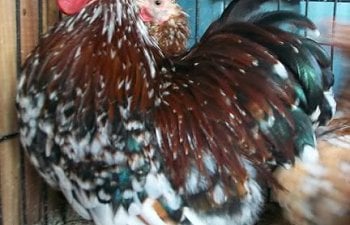
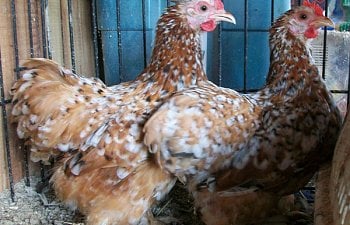
And here are the same birds as juveniles.
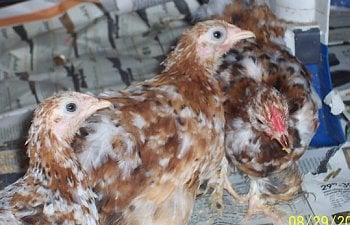
2nd Generation: Doc had three chicks from her first hatch. All were wheaten downed with various shades of color on the wings and all were cockerels.
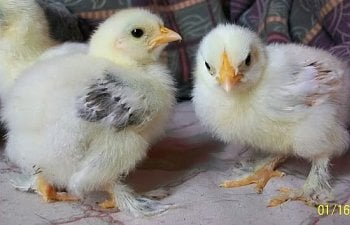
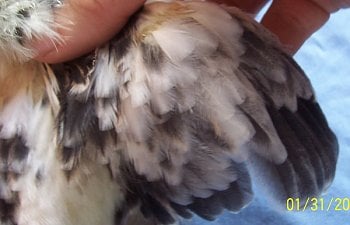
As they matured, she was unhappy with how the darker color on the wings of two chicks resulted in very dark colored birds. The 3rd roo shown below was the chick with the red/buff on his wings.
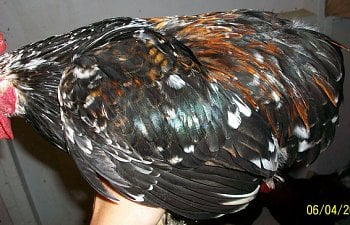
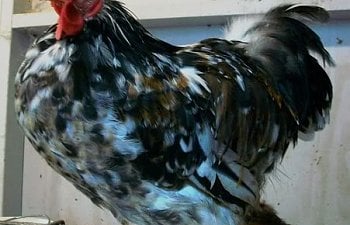
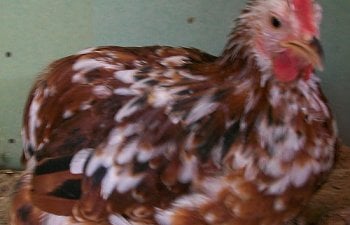
Doc is keeping the darker roos because they are displaying better type and she may need them later but is not using them at this point in her program.
Below are a few of Doc's next generation of breeders. She purchased the top two birds from other breeders and the bottom pullets are from her original stock. Ione will be making nice progress on her pattern as all of her birds are well marked. Looking forward to next years birds, Doc.
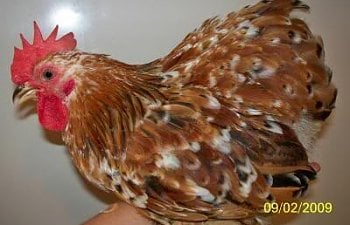
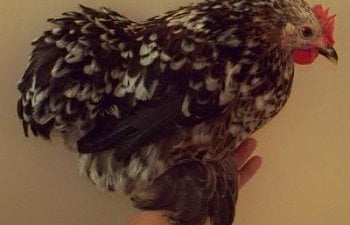
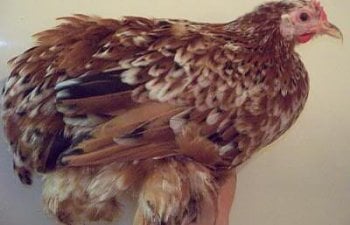
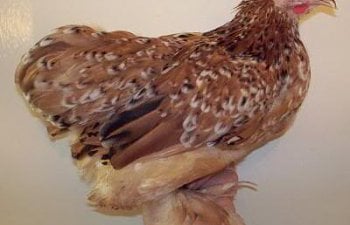
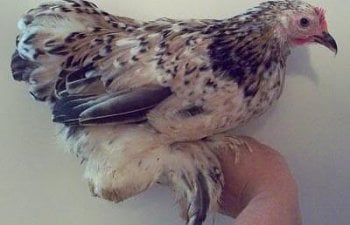
For more pics of Doc's birds, please visit her site, http://eggheadhill.smugmug.com/Chickens/809907
Tom's Project- Tom started with crossing an undermarked mottled roo with buff columbian hens. These are examples of the 1st generation. The pullet does have salmon mottling on her breast though it isn't clear in the pic.
Looking nothing like mille fleur, but trusting in genetics, Tom crossed his 1st generation cockerel to this buff columbian hen (above) and his 1st generation female back to a buff columbian roo. Here are some examples of the 2nd generation below.
As you can see, color is all over the map. What you can't tell from the young bird photos is that they are starting to come in with a few Mille Fleur looking feathers here and there. The cockerel with all the white will actually be much darker. His adolescent feathers are coming in more Buff Columbian looking.
Here's the youngsters all grown up into beautfiul, typey bantam cochins. Color has greatly improved as they matured and we'll be anxiously awaiting pics of this years birds.
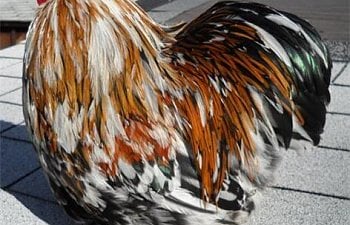
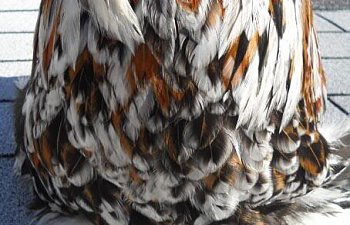
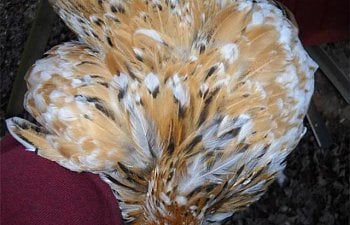
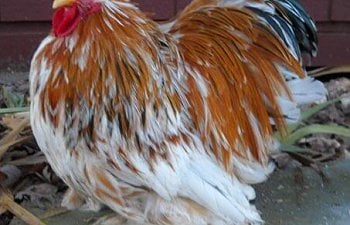
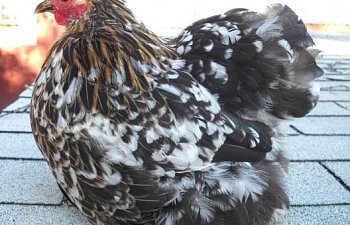
For more information on Tom's birds, please refer to his website, http://gff.cochinsrule.com
Patty's (OntheSpot) Project- Patty started with a mille fleur rooster and bred him to mottled cochin hens.
Here are some examples of the offspring of that mating. All hatched stongly resembling the mottled mothers but some developed rusty streaking.
Patty bred the pullets back to her initial roo and kept a couple cockerels who showed good phenotype, attractive combs, sound feet and legs, good temperment and decent markings as they may be useful later to cross back on her 2rd generation pullets.
Here is the 2nd generation. In just two short generations, Patty now has chicks that are less mottled and more mille fleur.
Here they are as juveniles below.
As they mature, Patty has noticed the more white they show in their juvenile plumage, seems like, the more mille fleur coloring they will have. These two darker girls have hardly any extra white splotches or white tips showing on their feathers.
Here they are all grown up. All I can say is Wow!! Great progress, Patty!
Cruzin T's Project- Starting with a trio hatched from Tate's birds, T wound up with a very good start. This roo is showing much promise with his typey round rump and beautiful color.
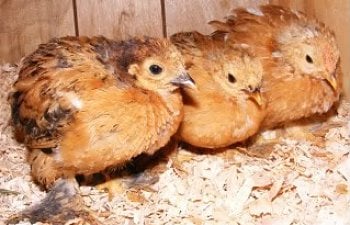
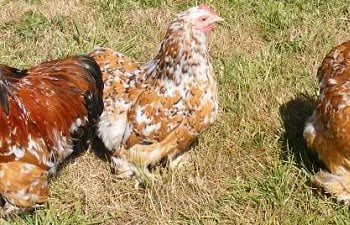
Here they are as chicks then as grown birds. And below are pics of chicks hatched from Lynnes birds as T is planning on developing her own line by combining birds from different breeders. Here are the boys all grown up.
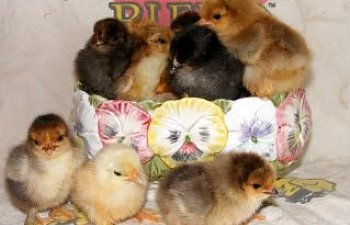
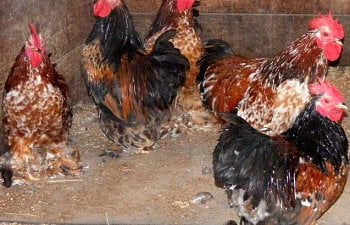
and here are the girls from Lynne
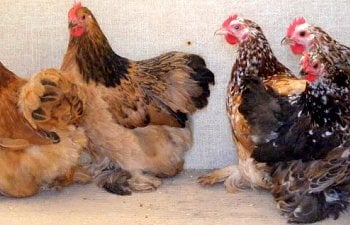
She also purchased birds from Mike (Bantyman).
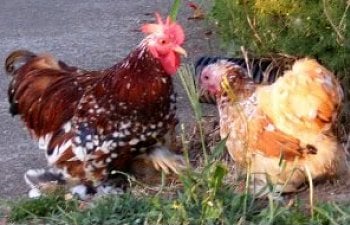
Down Color Analogy
This portion is intended to document what down color may produce the "best" adult color in mille fleur. Breeders have been hatching blondes, buffs, chipmunk patterned, dark grays, and everything in between. Let's see what we get from chick to juvenile to adult bird.
Blonde with red and black in the wings- owned by JoshsBantams



Chipmunk patterned -owned by Msbear
This down color gave me a pullet which is too dark in color and her beak is dark but she does have a decent pattern. I plan to use her in my program to see what happens.
This portion is intended to document what down color may produce the "best" adult color in mille fleur. Breeders have been hatching blondes, buffs, chipmunk patterned, dark grays, and everything in between. Let's see what we get from chick to juvenile to adult bird.
Blonde with red and black in the wings- owned by JoshsBantams
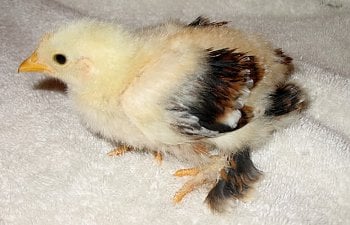
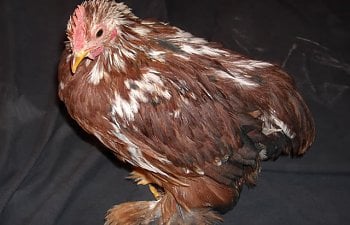
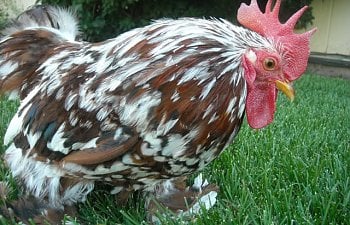
Chipmunk patterned -owned by Msbear
This down color gave me a pullet which is too dark in color and her beak is dark but she does have a decent pattern. I plan to use her in my program to see what happens.
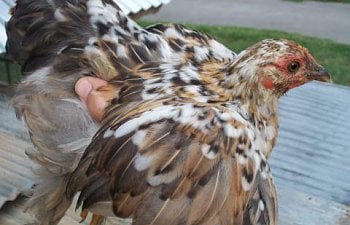
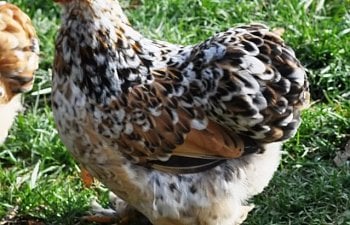
Wheaten down -blonde with shades of buff- owned by Msbear ...below are examples of a pullet and a cockerel.
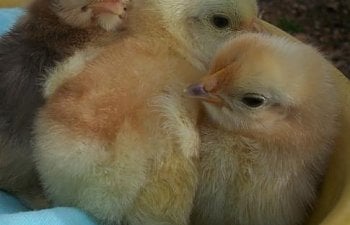
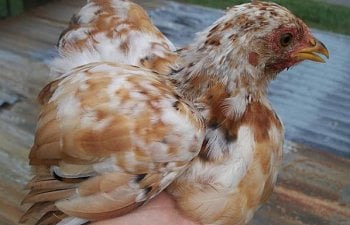
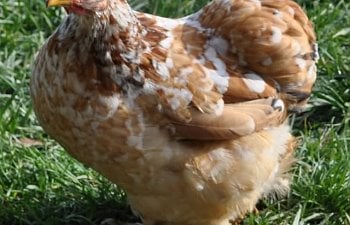
Gray down -owned by Msbear
This cockerel is a perfect example of how the mille fleur color can make such changes on its way to maturity. He is maybe too dark for the breeding program though he blossomed into a stunning bird. His bright buff mottling came from gray down as did his mahogany saddle feathers. This shows why it is important to let juveniles mature to adulthood before culling.
This cockerel is a perfect example of how the mille fleur color can make such changes on its way to maturity. He is maybe too dark for the breeding program though he blossomed into a stunning bird. His bright buff mottling came from gray down as did his mahogany saddle feathers. This shows why it is important to let juveniles mature to adulthood before culling.
